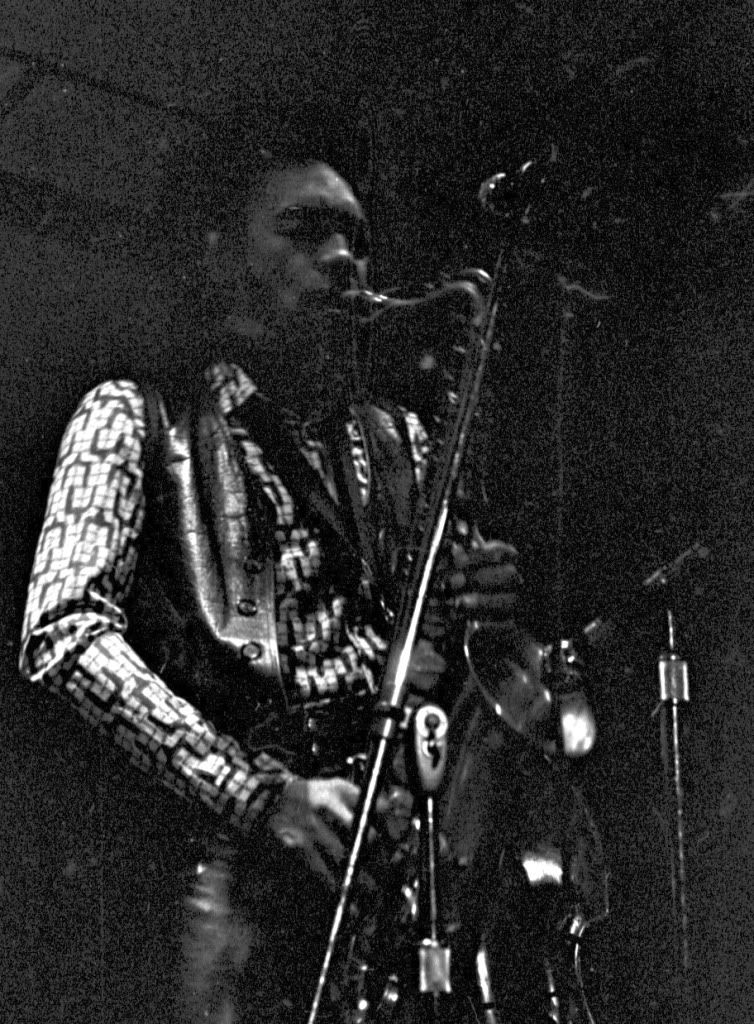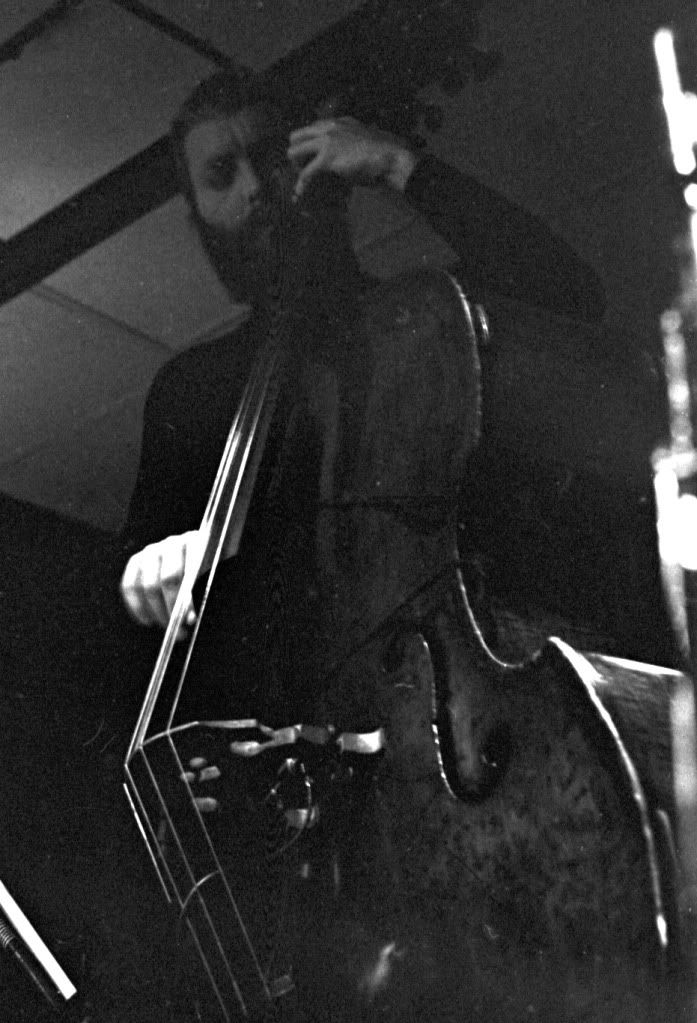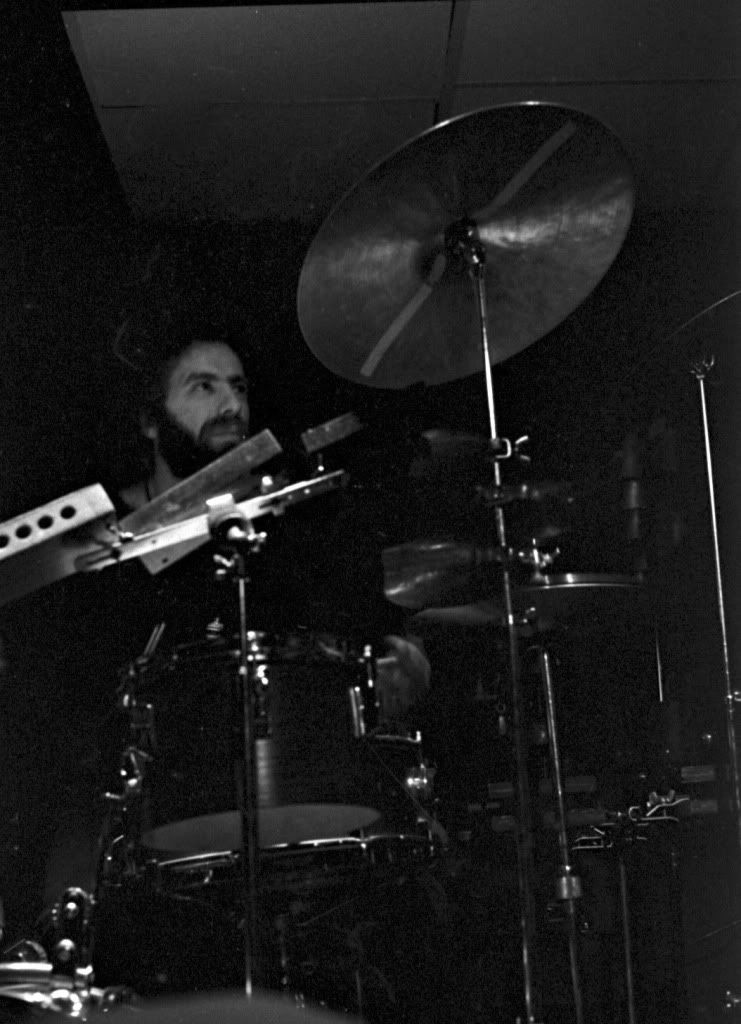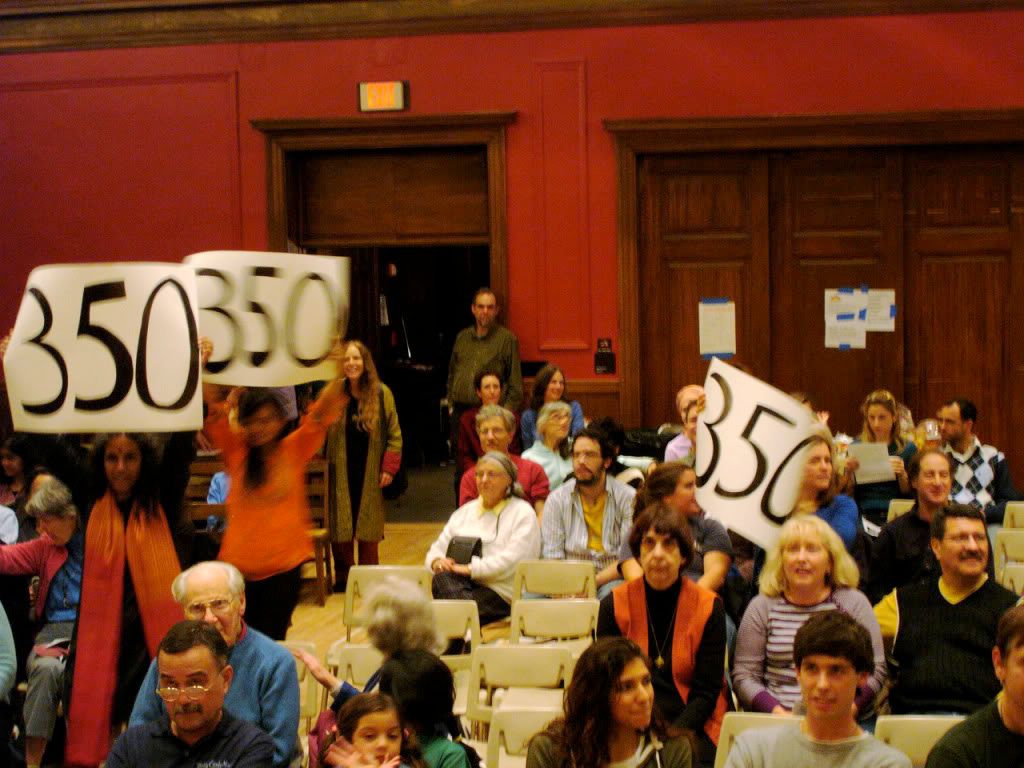Education music Personal: genius near genius world music
by Warren
3 comments
Meta
SiteMeter
Brighter Planet
The Tony Schwartz Music Exchange Tape

In the mid-to-late 1970s, I lived in group houses with a broad assortment of interesting people. One of them was Seth Deitch, who had as part of his vast array of stuff an assortment of reel-to-reel tapes inherited from his father, the brilliant animator Gene Deitch.
Eventually we acquired a reel-to-reel machine and began the process of dubbing all these tapes onto cassette. They were in poor condition, so this amounted to a rescue operation.
Some of the material was old jazz, some of it was old radio commercials; one reel contained a set of 1949 performances by John Lee Hooker that many years later got released as “Jack Of Diamonds.”
And one reel held this extraordinary document:
Tony Schwartz, master of electronic media, created more than 20,000 radio and television spots for products, political candidates and non-profit public interest groups. Featured on programs by Bill Moyers, Phil Donahue and Sixty Minutes, among others, Schwartz has been described as a “media guru,” a “media genius” and a “media muscleman.” The tobacco industry even voluntarily stopped their advertising on radio and television after Schwartz’s produced the first anti-smoking ad to ever appear (children dressing in their parents’ clothing, in front of a mirror). The American Cancer Society credits this ad, and others that followed, with the tobacco industry’s decision to go off the air, rather than compete with Schwartz’s ad campaign.
Born in midtown Manhattan in 1923, a graduate of Peekskill High School (1941) and Pratt Institute (1944), Tony Schwartz had a unique philosophy of work: He only worked on projects that interested him, for whatever they could afford to pay.
{snip}
For many years he was a Visiting Electronic professor at Harvard University’s School of Public Health, teaching physicians how to use media to deal with public health problems. He also taught at New York University and Columbia and Emerson colleges. Because Schwartz was unable to travel distances, he delivered all out of town talks remotely. Schwartz was a frequent lecturer at universities and conferences, and gave presentations on six of the seven continents (not Antarctica). He was awarded honorary doctorates from John Jay, Emerson and Stonehill Colleges.
{snip}
“Documenting life in sound and pictures” is something Tony Schwartz begin in 1945, when he bought his first Webcor wire recorder and began to record the people and sounds around him. From this hobby developed one of the world’s largest and most diverse collections of voices, both prominent and unknown, street sounds and music, a collection that resulted in nineteen phonograph albums for Folkways and Columbia Records.
During the 1950s, Tony Schwartz sent this recording out into the world, presumably under an early version of a Creative Commons license.

While I was already getting interested in what was then called “Ethnic Music,” this recording was something completely different — dozens of different songs from all over the planet, each introduced by the same voice. I must have listened to the Tony Schwartz Exchange Tape a couple of hundred times over the next few years, but time marched on and the dubbed version of the Tony Tape came to rest in my collection alongside hundreds of other cassettes. In the early 2000s I duplicated it onto a CD, where it continued to lie dormant.
I bumped into Tony Schwartz’ name a few times on various Folkways lps, but never learned much about the man until I started listening to the Kitchen Sisters’ wonderful “Lost And Found Sound” series — and then I had a delightful shock of recognition. Give this audio portrait a listen.
Anyhow, I’ve been transferring all my sound files to my computer, and this one finally had its turn…and I says to myself, says I, “Well, this certainly deserves to be out in the world.”
Here you go, world.
April 22 Action environment Jazz music: benefit concert genius violin
by Warren
leave a comment
Meta
SiteMeter
Brighter Planet
Mimi Rabson Quartet: Violins Against Climate Change, April 22, 2011
Mimi Rabson appeared with her group, including Nick Grondin on guitar, Dave Clark on bass, and Ricardo Monzon on drums. They played an absolutely terrific set. Listen and enjoy:
“The Next Vehicle” (The beginning of this piece was cut off — sorry!)
“Billie’s Bounce” (Nick Grondin arrangement)
“Heal I-Self”
“Marking Time”
“Because I Can”
“Ska Circus”
“Archnophobia” — Composition: Dave Clark
“Why’d Ya Do It?”
===========================================
This music was performed to benefit 350.org. Please consider donating some money to them if you have enjoyed listening. Just click on the photo.
India Indian music music: genius
by Warren
leave a comment
Meta
SiteMeter
Brighter Planet
78 rpm Records of Indian Music: Ravi Shankar Needs No Introduction
Raga Hemant
“Bengali Kirtan”
I will be posting more 78s in the next couple of days.
India Indian music music vocalists: agra gharana genius
by Warren
5 comments
Meta
SiteMeter
Brighter Planet
The Meticulous Art of “Sujan” — Pandit Shrikrishna Narayan Ratanjankar
Ratanjankar’s influence as a teacher is widely felt both in the work of singers like K.G. Ginde, S.C.R. Bhatt, and Dinkar Kaikini — and in the institutions of music education in contemporary India. His own singing reflected his considerable erudition and deep scholarship. These recordings are from an A.I.R. Special Programme.
Raga Yamani Bilawal
Raga Basant Mukhari
Pandit Shrikrishna Narayan Ratanjankar was an able and talented singer as well as an excellent and experienced music teacher. his songs were disciplined and entertaining. His singing style was classical and without any mistake.
Ratanjankar was born on December 31, 1890 in Bombay . He learnt music from the famous Pndit Vishnu Narayan Bhatkhande and Ustad faiouz Khan. In 1926, he did graduation from Bombay University . Later he became the Principal of Bhatkande Sangeet Vidyapeeth and held this post till 1928.
He was a singer of Dhrupad and Khayaal of Agra Gharana. He wrote many books related to music that included ‘Taan Sangrah’, ‘Sangeet Shiksha’, ‘Abhinava Geet Majnani’. In 1957, he was honoured with the title of Bhushan by the Indian government for his contribution to art and culture. In 1963, he was chosen a fellow of Sangeet Natak Academy . He died on February 14, 1974 .
Raga Sampurna Bageshri
Raga Vibhaas (Marwa Thaat)
Raga Adana (Lakshan Geet)
Shrikrishna Narayan Ratanjankar `Sujan` occupied a pre-eminent position in the spectacular developments in the field of Hindustani music in the 20th century. A foremost disciple of Chatur Pandit Bhatkhande and a ganda-bandh shagird of the great Ustad Faiyaz Khan, Ratanjankar was an excellent performer, a learned scholar and a great guru with a number of accomplished disciples. His ascetic simplicity, his dedication to and personal sacrifice for the propagation of classical music are legendary.
Born in Bombay on January 1, 1900, Ratanjankar first trained under Pt. Krishnam Bhat of Karwar and then under Pt. Anant Manohar Joshi (Antu Bua). However, it was the influence of Pt. Bhatkhande which shaped his career and life for the next sixty years. In 1917, with a scholarship by Baroda State, Bhatkhande placed Ratanjankar under the tutelage of the legendary vocalist, Ustad Faiyaz Khan.
Besides being a graduate and a polished musician, he was already a profound scholar in music when in his early 20s. By common consent, Ratanjankar was regarded as the leading musicologist of his generation, and the indisputable successor of Bhatkhande as a supreme authority on historical and musicological questions. Ratanjankar went on to become professor and subsequently, Principal of Marris College of Music, founded by Bhatkhande. During his tenure, Marris College came to be regarded as a place of pilgrimage by most famous Hindustani musicians. He remained committed to Bhatkhande`s Music College through difficult times, even parting with his salary to pay the other staff members whenever there was a financial crunch. Later, when Indira Kala Sangeet University was inaugurated in Khairagarh (Madhya Pradesh), Ratanjankar was appointed Vice-Chancellor. He was also associated with AIR as the chairman of the Music Auditions Board.
Raga Mian Ki Sarang
Raga Kedar Bahar
Decades ago, when Pt. Ratanjankar was known with affection and respect as “Anna Saheb” among his colleagues, friends and followers, and his voice was in excellent form, he could have chosen the more paying and exciting life of a practical musician. But, such was his reverence and loyalty to the memory of his Guru, that he chose to follow the latter’s footsteps, to continue the work of training generations of musicians and music teachers, and to work in every possible way for the propagation of classical music. So dedicated was he to his ideals, that he stuck on steadfastly to the Principalship of the Bhatkhande Music College, Lucknow, through three long decades when emoluments were meagre, and sometimes, not forthcoming at all! Leaving his family in Bombay, Srikrishna Ratanjankar spent the best years of his life cooped up in a small room next to his equally small office-cum-class room in the college. It would not be an exaggeration to say that but for the enormous personal sacrifices that he made, this music college would not have survived the years of poverty and emerged as such a reputed institution today. While personal tragedies assailed his life repeatedly, this small, frail, man continued to live like a true Karma Yogi, imparting music to students and scholars who flocked to him from all parts of India, and Ceylon, writing scholarly articles on music for various journals, seminars and radio-talks, and enriching our music with a prolific number of masterly compositions such as Khayals, Lakshanageets, Taranas and Bhajans (in Hindi and Sanskrit). An erudite scholar in music, he remained an eager student and research-scholar till the end.
Born on the first dawn of this century in a middle-class Maharashtrian family of Bombay, Srikrishna’s father (an officer in the C.I.D.) had a deep and discriminating interest in music. Therefore, he was able to have the good fortune of receiving excellent training in the art under the most efficient masters available. At the age of 7, young Srikrishna was put under the training of Pt. Krishnam Bhat of Karwar (a pupil of Kale Khan of Patiala Gharana) whose method of teaching was so thorough that in 2 years of (nothing but) scale exercises, the boy’s “swar-jnan” was perfected. His next teacher was Pt. Anant Manohar Joshi (a pupil of Balakrishna Buwa). It was about this time that Srikrishna’s family came into contact with Pt. Bhatkhande Ji. The latter was so deeply impressed by the boy’s talent and zeal, that the Chaturpandit predicted that with proper training, he would not only become a great musician, but also a pioneer in the rejuvenation and popularization of Hindustani classical music.
Raga Ramdasi Malhar
Raga Jaitshri
Until I compiled this page it had escaped my notice that Ratanjankar was for a time a student of Antubuwa Joshi. My own guru Devasthalibua had learned briefly with Antubuwa many decades later, at the behest of his son Gajananbua Joshi.
India Indian music music vocalists: genius
by Warren
1 comment
Meta
SiteMeter
Brighter Planet
Bhendi Bazaar Gharana…
…the “fourth generation,” as represented here by Pt. Shivkumar Shukla.
Khyal in Raga Shahana Kanada:
The Bhendi Bazar Gharana has a history of over 150 years. It was established around 1870 by the three brothers, Chajju Khan, Nazir Khan and Khadim Hussain Khan who had come to settle in Mumbai from Muradabad in Uttar Pradesh. They had trained under their father, Ustad Dilawar Hussain Khan. In order to expand the field of their knowledge, they took training in Dhrupad from Ustad Inayat Khan of the Dagar Parampara. They settled in a then prosperous area of Mumbai called Bhendi Bazar ( It was located behind the Fort area of Mumbai and was called ‘Behind the Bazar’ which later became Bhendi Bazar).
There they formed their own singing style which came to be widely appreciated and acclaimed. They were called ‘’Bhendi Bazarwalle’’ and the Gharana or Gayaki became the Bhendi Bazar Gharana. This Gharana has many an illustrious name to its credit. Anjani Bai Malpekar, Ustad Aman Ali Khan, Pt Shiv Kumar Shukla, Pt T. D Janorikar to name but a few. This Gharana has flourished and enriched our music over time with its unique features and specialties alongside the other well-known Gharanas of Khayal music.
Sargam composition Raga Kafi:
Though not the most popular or widely-known of gharanas, the Bhendi Bazaar style make a conspicuous impact on North Indian classical music during the first half of the 20th century through the efforts of its most gifted exponent, Ustad Aman Ali Khan. His ancestors, Chhaju and Nazir Khan, originally trained in the Rampur-Sahaswan style, migrated from Uttar Pradesh in the turn of the 19th century and settled down in the Bhendi Bazaar area in Bombay. A modest and reticent man, Aman Ali was not only a fine singer, but also a composer par excellence. One of his best-loved compositions is the swingy bandish Laagi lagan pati sajan sangh (structured along the lines of Dikshitar`s kriti, Vatapi ganapathim bhaje) in Hamsadhvani, later popularised by Ustad Amir Khan. His popularity in Western India was so vast that Lata Mangeshkar had learnt under him for a while. Ustad Amir Khan picked up the subtleties of this gayaki from his father, Shamir Khan, who had learnt under Chhaju Khan and Nazir Khan, and later from Aman Ali himself.
Aman Ali was strongly influenced by certain aspects of Karnatic music, especially the rendering of complex note patterns (swaraprasthas) in aesthetically agreeable ways. He, along with Abdul Karim Khan, was largely responsible for popularising the use of sargams during raaga elaboration. During the time of Partition, he migrated to Pakistan leaving behind a few dedicated disciples like Anjanibai Malpekar, Shivkumar Shukla, Ramesh Nadkarni and T.D. Janorikar to continue his legacy. Suhasini Koratkar is a well-known contemporary exponent of this style.
Some of the identifiable aspects of this gharana are:
Use of merukhand method of singing notes and note combinations. The singers incorporate the complex merukhand permutations into their raaga elaboration.
Use of aesthetic ornaments imported from the Karnatic system like brukas (short, swift and razor-sharp executions of melodic ideas during raaga elaboration) and sargams with great aesthetic feeling and finesse.
Particular stress on the proper articulation and enunciation of the words of the bandish. Many of Aman Ali’s compositions possess much literary quality, demanding a great deal of vocal dexterity and sensitivity to bring forth their beauty.
Preference for singing in the medium tempo.
Raga Motaki:
music vocalists: blues genius
by Warren
leave a comment
Meta
SiteMeter
Brighter Planet
THIS is the blues, okay?
Howlin’ Wolf:
from 1966, here’s How Many More Years?
Smokestack Lightnin’ :
At the end of his career, with failing kidneys, singing “Evil”:
India Indian music music: genius sarod
by Warren
leave a comment
Meta
SiteMeter
Brighter Planet
78 rpm Records of Indian Music: The Sublime Artistry of Ustad Ali Akbar Khan
Finally getting around to some more 78 rpm discs. Here are two recordings of Ali Akbar Khan’s earlier years. His plangent and expressive tone comes through loud and clear through the surface noise. Enjoy these recordings of one of the world’s greatest masters.
Raga Lankadahan Sarang
Raga Kedar
Jazz music Personal photoblogging: genius
by Warren
5 comments
Meta
SiteMeter
Brighter Planet
More Jazz Photoblogging: Sam Rivers Trio, Boston, 1976
I digitized a lot of photos over the past year, but I haven’t gotten around to putting them online. Here are some pictures from a wonderful performance by Sam Rivers’ Trio at the Jazz Workshop. Most of these were woefully underexposed; some parts of the images were restored digitally.
While I don’t feel these are my best work they nonetheless capture some of the ambience of the gig that night. Not bad for a high-school student.
Sam Rivers is a truly amazing musician who is still going strong. Here is his website.

Sam Rivers

Dave Holland

Barry Altschul

Sam Rivers
Education environment music vocalists: genius Tuva
by Warren
leave a comment
Meta
SiteMeter
Brighter Planet
The Musical Impact of Climate Change, pt. 2
“Throat Singing” from the Siberian nation of Tuva is one of the most remarkable phenomena in all world music; individual voices are trained to produce multi-note melody-and-drone combinations, creating an orchestral effect.
Kongar-ol Ondar visits David Letterman
Tuva has been inhabited since the 12th century, starting with the expansion of the Mongolian empire, but because of changes in weather and climate (increasing drought, growing and fire seasons), the severity of fires and areas burnt have increased since 1990. At the same time, protecting the area against future fires is becoming more difficult. This might be because large portions of the forest are being converted to a steppe-type ecosystem after fires have occurred, which further inhibits post-fire forest regeneration. Such a conversion is precisely what models predict will be an initial indicator of climate-induced ecosystem change. In addition, annual fire carbon emissions have been estimated for the Balgazyn forest of Tuva with regard to ground fuel loading and fire severity. This is important because the dryer the fuels, the more severe the fires and the greater the greenhouse-gas emissions. And, forests are not always able to regenerate on severely burnt or repeatedly burnt regions.

